Yu Gi Oh Ow to Know if Spell Card is Continuous
In today's Yu-Gi-Oh! meta, Spells have become the second-most important card type in the game (surging ahead of Traps), as most decks have more Monster Effects as well as finding Traps far too slow. While many players have taken Spells for granted for years, there's always been a handful that have warped their respective eras of Yu-Gi-Oh!
For this list, we'll be looking at the most powerful Spells in the game and ranking them according to what they can do (and have done). From former and current staples to Archetype-specific cards, absolutely nothing is off-limits here. With that in mind, expect to see a bunch of banned cards.
Updated January 3rd, 2020 by Johnny Garcia: The game of Yu-Gi-Oh! is constantly evolving. From rule changes to tons of new cards being added every month with the release of new sets, modern-day Yu-Gi-Oh! looks nothing like how it used to. Spell cards, in particular, have become even more powerful, now arguably the best kind of card in the game. While Traps have gotten progressively worse with time, Spells have only gotten better as more powerful Spells enter into the metagame. Some Spell cards even have the effects of cards that were previously banned, and are perfectly okay in today's metagame. New Sets like Phantom Rage and Genesis Impact continue to release amazing new cards for Archetypes new and old.
15/15 Super Polymerization
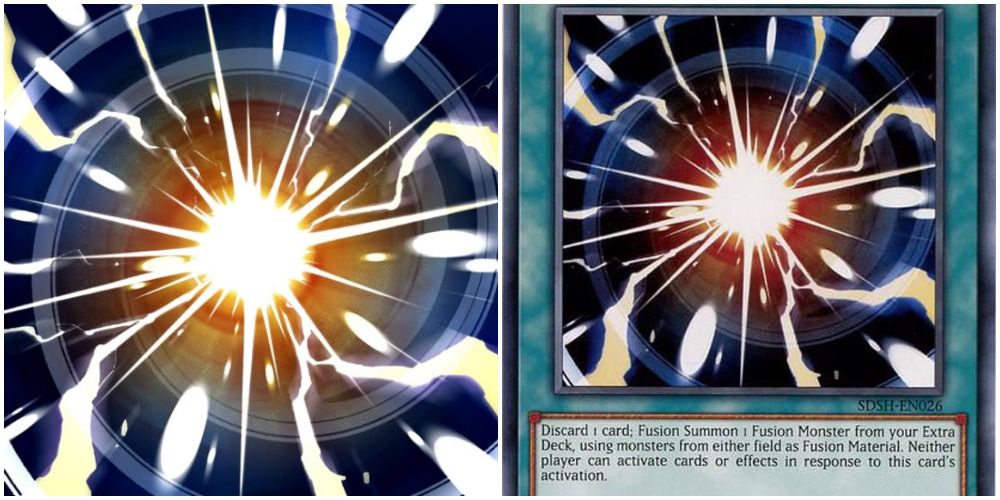
If a card is Spell Speed 4, that means that no other card can respond to its activation. The best Spell Speed 4 card is Super Polymerization. At the cost of discarding one card, Super Polymerization can use Monsters on both sides of the field as Fusion Materials for a Fusion Summon.
This means it can use just the opponent's Monsters so that you don't have to lose any of your own. To add even more power to it, Super Polymerization is a Quick-Play Spell, meaning it can be used during either player's turn.
14/15 Lightning Storm
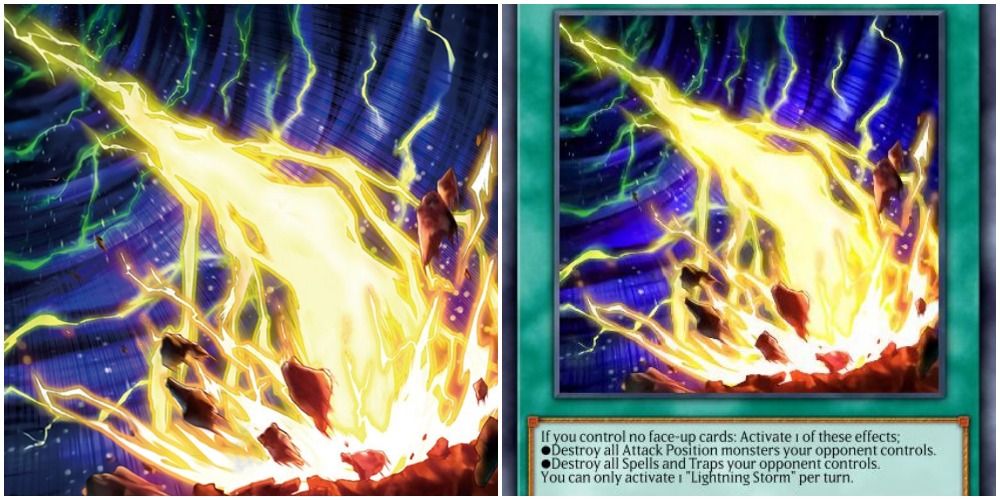
One of the more recent cards, Lightning Storm became an instant staple when it was released. So long as you control no face-up cards, you can activate it. Lightning Storm then can either destroy all Attack Position Monsters on the opponent's field or all Spell and Trap cards they control.
Both of these effects are similar to cards that are both Limited, those being Raigeki and Harpie's Feather Duster. Having access to these two powerful effects at the start of your turn is incredible, and Lightning Storm quickly became one of the best going second cards in the game.
13/15 That Grass Looks Greener
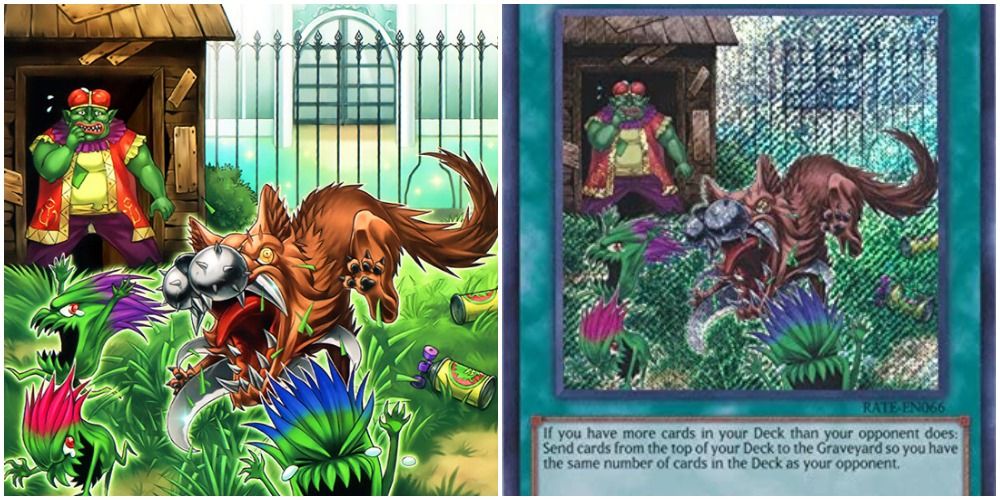
As the game of Yu-Gi-Oh! progressed through the years, cards with Graveyard effects became more and more common. At first, cards could only be recovered with cards like Monster Reborn. As more Effect Monsters came into the picture, the ability to use cards in the Graveyard became commonplace.
This caused That Grass Looks Greener to skyrocket in use and popularity. It required running the maximum deck size (60) to get the most use out of it as 40 cards were the most common deck size. If it resolved in this situation, it led to 20 cards being milled and tons of effects being activated.
12/15 Graceful Charity
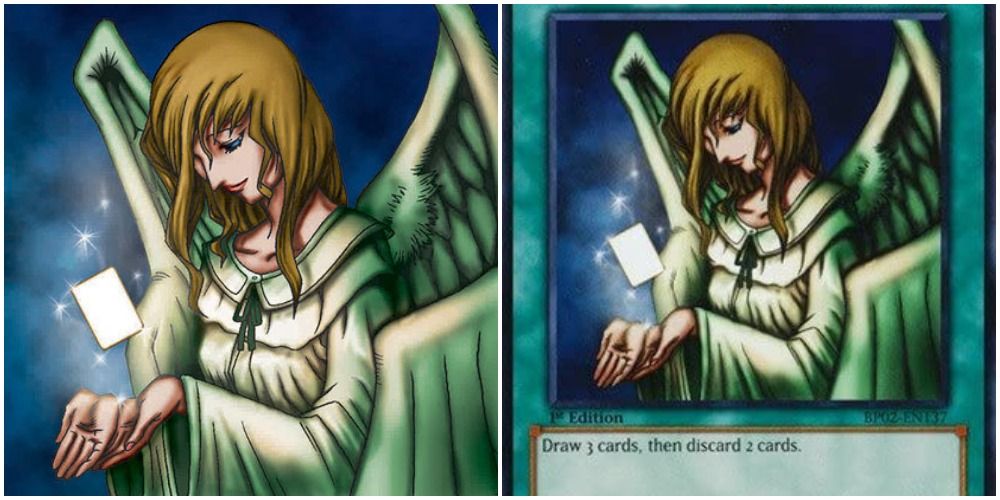
Graceful Charity is arguably the best draw Spell card ever printed, rivaling that of the iconic Pot Of Greed. Graceful Charity allows you to draw three cards, so long as you discard two. While this may seem like a steep cost to balance it out, this couldn't be farther from the truth.
However, Yu-Gi-Oh! has plenty of cards that want to be in the Graveyard. Even when it was first released the card was quickly Limited due to how good it was. Being able to get rid of useless cards from your hand and refresh it with new ones (or in some cases setting up the Graveyard with the discards) is just too good of an effect, so it's been banned for years.
11/15 Painful Choice
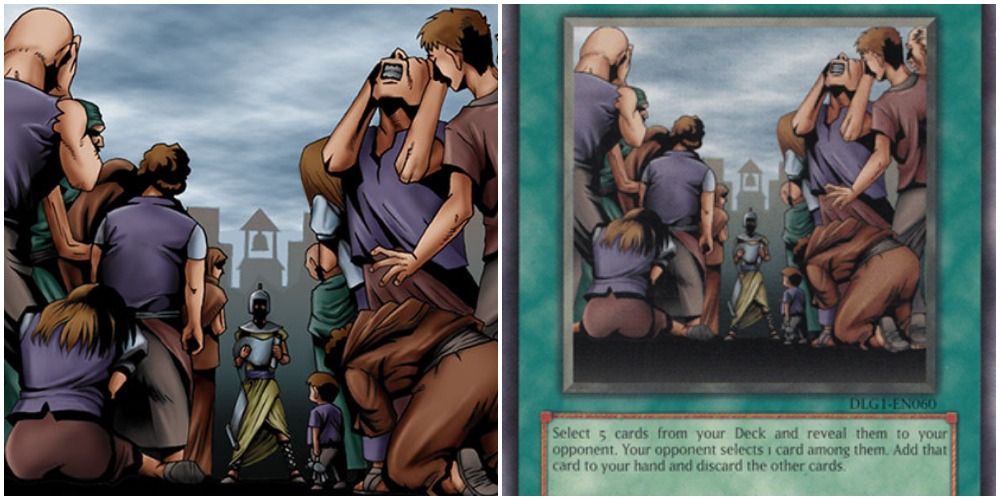
Painful Choice lives up to the name, with it causing tons of Yu-Gi-Oh! players pain whenever an opponent activated it. It sends five cards from your deck to the Graveyard, and the opponent has to choose one of those cards to add to your hand.
This leads to Painful Choice being able to get plenty of powerful cards into your hand by forcing your opponent to pick a powerful card. Painful Choice only got better with age as more cards with Graveyard effects entered into the card pool. Painful Choice has been banned for years, and will likely never be unbanned for the rest of the game's history.
10/15 Raigeki
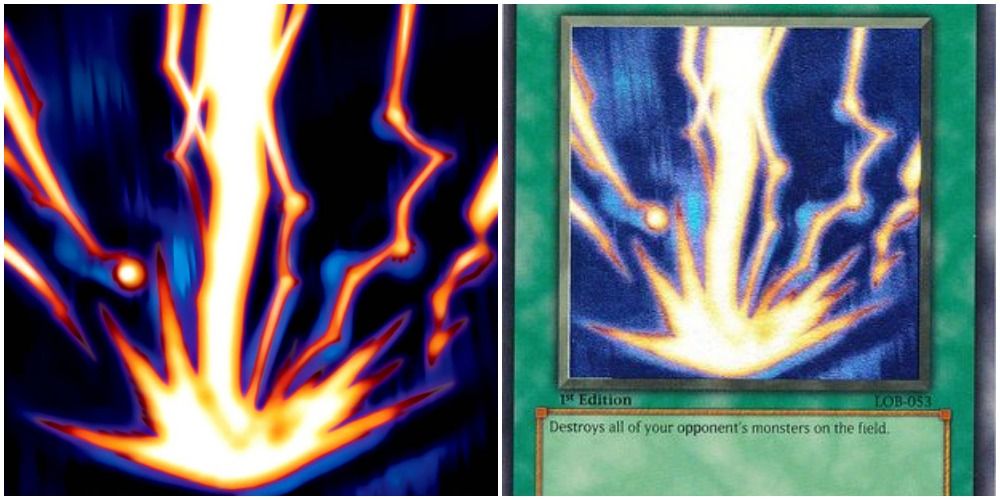
Though it doesn't get the credit it once did, Raigeki used to be quite the incredible card. With a single play, a player could obliterate their opponent's entire field of Monsters. This spent years on the forbidden end of the banlist, with Dark Hole taking its place in player's decks as the mass monster destruction card of choice.
However, Dark Hole forced players to destroy their own Monsters (or play it on an empty field), and Lightning Vortex required a player to discard a card in their hand to activate it, making Raigeki the easy include over both when it was finally brought back to the game.
9/15 Harpie's Feather Duster
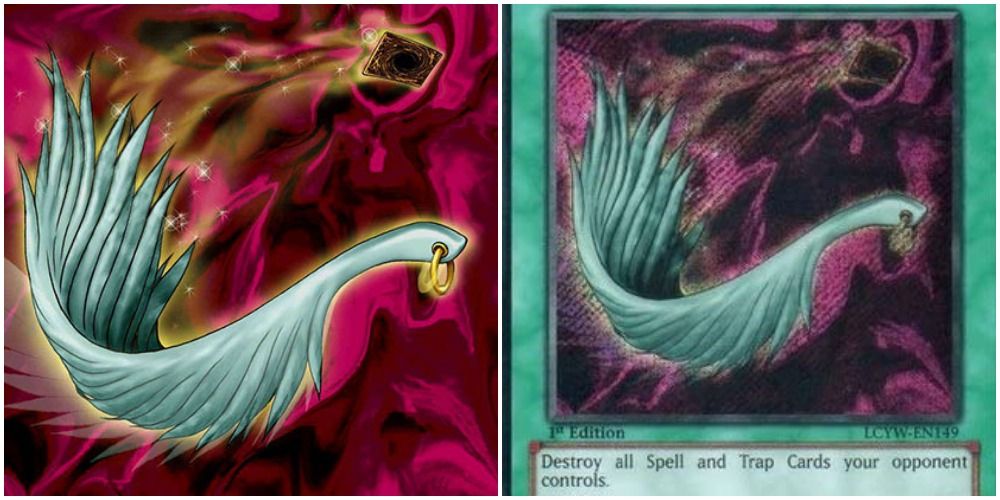
This card is about as simple as it gets. Harpie's Feather Duster destroys all the opponent's Spell and Trap cards. There's no cost to pay or drawback to the player, it just does so because it was printed during an era when you couldn't lose the entire duel off a single misplay.
Harpie's Feather Duster spent years on the TCG banlist before it would eventually have its restrictions loosened up a bit and Limited instead of banned. The only good thing about this card was the cute effect it had in video games, where a literal feather would swipe across an opponent's back row to sweep away all their cards.
8/15 Cold Wave
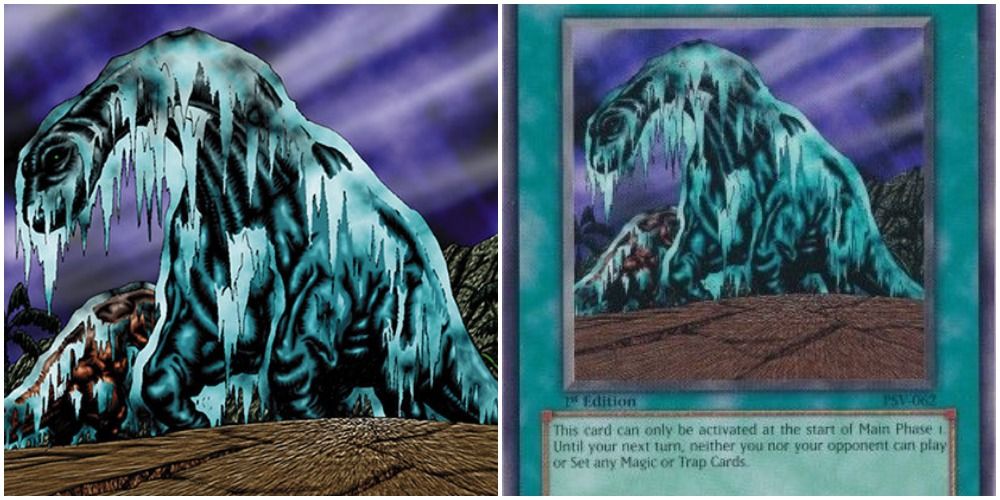
While Heavy Storm and Harpie's Feather Duster felt like obviously unfair cards from the beginning, Cold Wave had to sneak in and destroy player's hopes after the fact. The card grew especially popular during the Synchro era, where summoning a bunch of powerful Monsters became easier than ever. Notably a major part of the X-Saber Rescue Cat deck, players would activate Cold Wave to stop players from playing or setting Spell/Trap cards until their next turn, then go all in on Summoning Monsters.
This essentially made it impossible for the opposing player to respond to anything being done, resulting in easy, non-interactive turns. Worse, since the effect didn't wear off until the opponent's following turn, they couldn't do anything to get rid of the Monsters on their own turn either.
7/15 Soul Charge
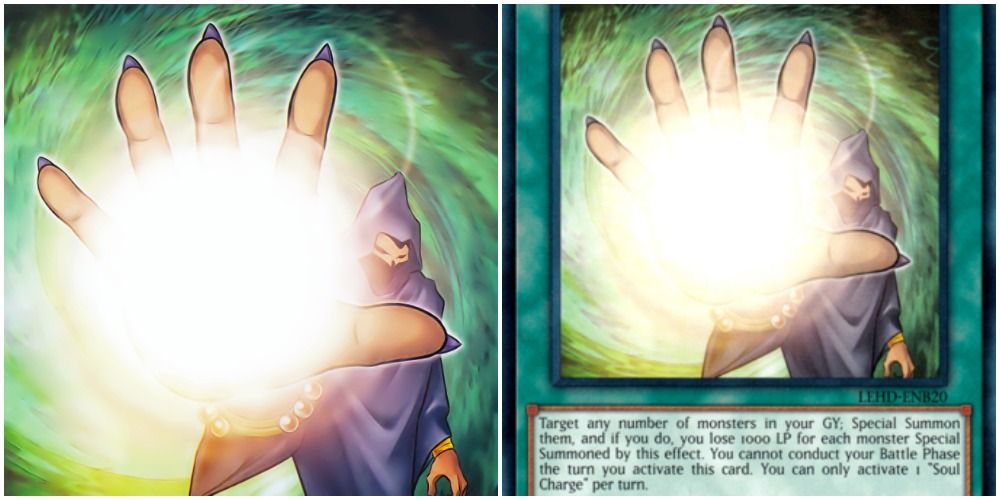
Soul Charge was one of Konami's attempts at creating a balanced way to bring back Monsters from the Graveyard. After all, it cost 1000 life points per Monster and the player using it couldn't go into their Battle Phase that turn. That means they could lose anywhere from one to five thousand life points and give up their battle phase.
Unfortunately, modern Yu-Gi-Oh! is all about building unbreakable fields, meaning this just gave them the opportunity to Summon a bunch of Monsters to build the best field possible. Passing up a Battle Phase in a game where the Battle Phase is beginning to matter less is a small price to pay, and led to Soul Charge being banned.
6/15 Super Rejuvenation
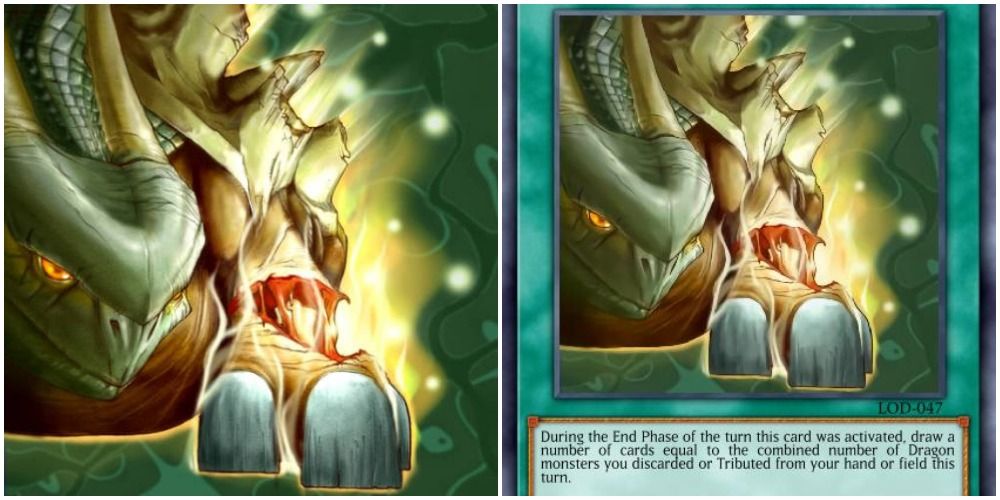
Super Rejuvenation was an innocuous card for years. It existed, but largely not a part of any deck that actually mattered. At least, not until Dragon Rulers showed up. A deck based around discarding Dragons to Summon Dragons, it happened to work perfectly with Super Rejuvenation, a card that allowed players to draw cards equal to the number of Dragon-Type cards they'd discarded for the turn.
What was once the only drawback of Dragon Rulers (you had to discard two to summon one) became yet another selling point of the deck, as you were rewarded for placing Monsters on the field. The card was Limited, then outright banned before eventually returning to three copies per deck long after Dragon Ruler format ended.
5/15 Future Fusion
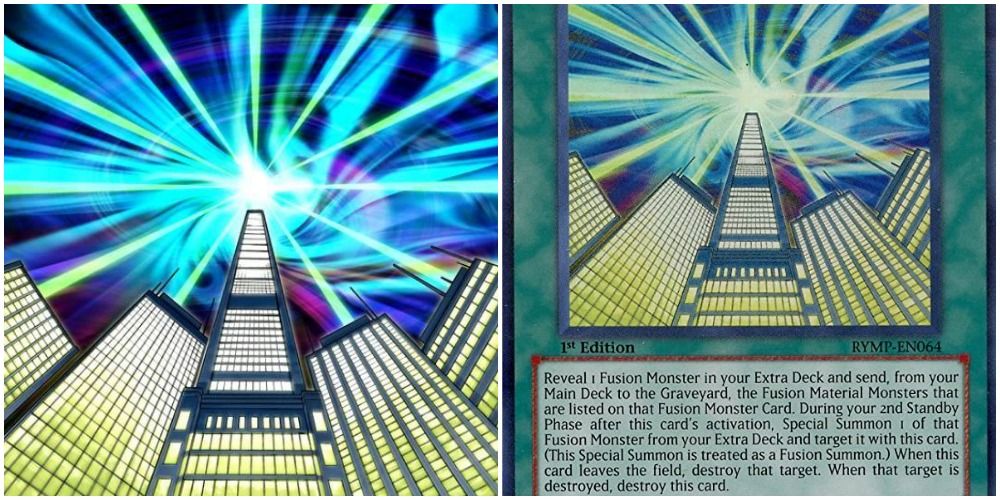
For years Future Fusion was a cute, if annoying way to summon Five-Headed Dragon to the field. One fateful day, Konami released Dragon's Collide, a Structure Deck which featured a handful of Monsters that could Summon themselves based on Monsters in the Graveyard.
That Structure Deck was the beginning of Chaos Dragon, and Future Fusion only made the deck that much more powerful. It spent years on the banlist, because no-one thought creating free resources by dumping Monsters into the Graveyard while also getting a free Monster Summon was very fair. Future Fusion returned to the game after an errata that severely nerfed its effect, not taking place until the next Standby Phase after it was activated.
4/15 Pot of Avarice
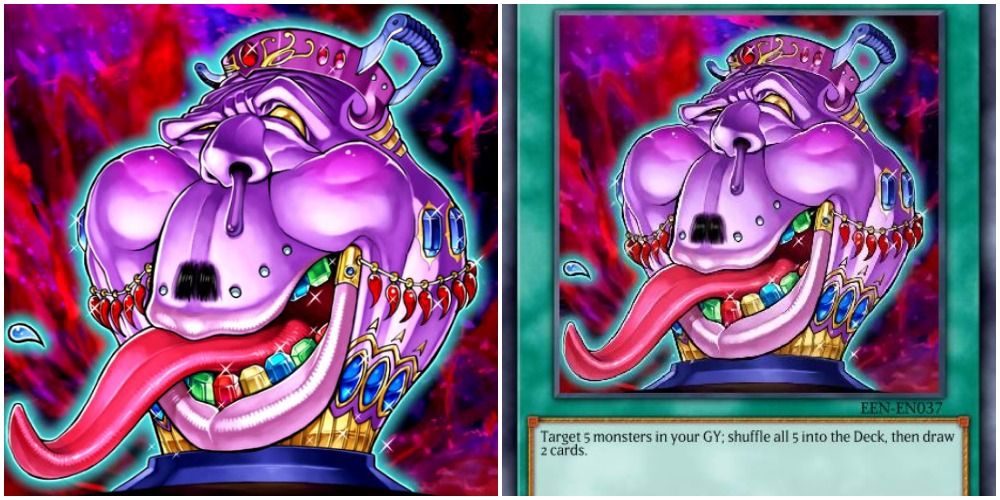
Some more experienced players might be looking for a different Pot to have found its way to the list. While there's one advantage Pot of Greed has over Pot of Avarice, in the modern game Pot of Avarice feels more dangerous. Pot of Avarice allows players to take five Monsters from their Graveyard and shuffle them into the deck, then draw two cards.
Avarice is a card that's only gotten better with time. Since the card specifies deck, players can choose to recur all of the Extra Deck Monsters they've burned through and still gain two cards off of it. Former top-tier decks like Zoodiacs and current top-tier decks like Sky Striker would love nothing more than to recur all of their Graveyard resources and gain cards anyway. Pot Of Avarice has spent time all over the banlist before eventually being put back to three copies per deck recently.
3/15 Royal Tribute
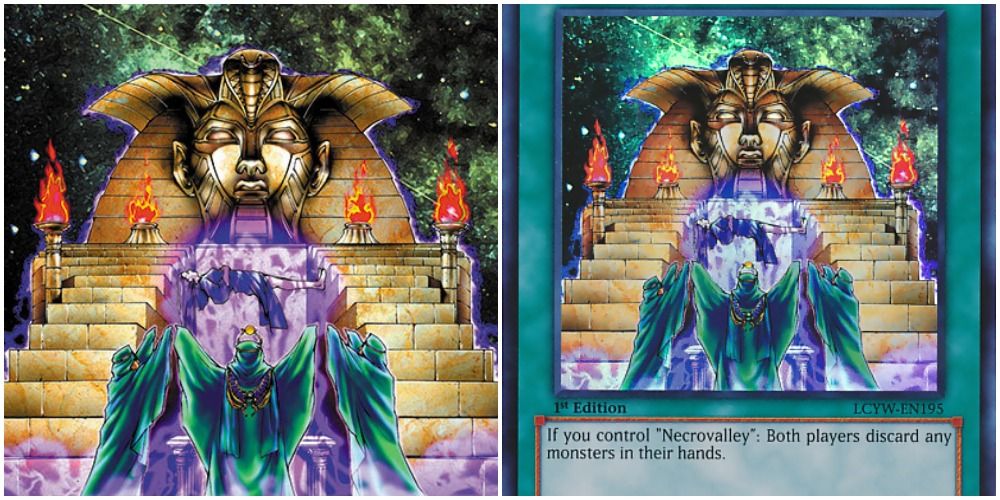
This card is terrifying no matter what era it's in. It has a drawback in forcing the Gravekeeper Field Spell Necrovalley to be on the field, but the trade-off is disgusting. Forcing a player to send their entire hand to the Graveyard is a devastating ability.
Worse, with Necrovalley on the field, most of the Effects a player could use to recur their Monsters in the Graveyard can't be activated. This card is dangerous enough if it occurs after players have had some time to set up their fields, but when activated at the beginning of a game, it forces a player to dump their entire hand and skip their turn.
2/15 Gateway Of The Six
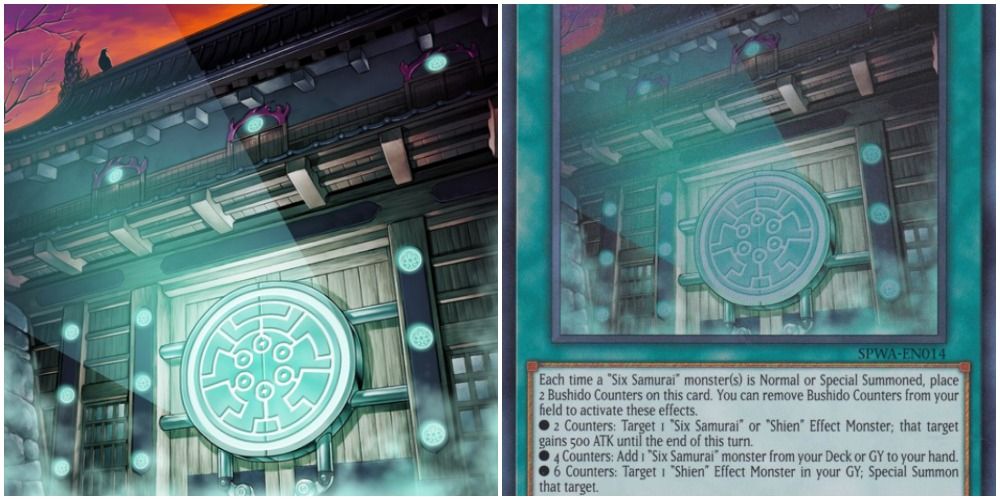
Gateway of the Six is one of the few cards that operates off its own resource system (counters, given when a player summons Six Samurai Monsters), offering multiple effects that were all good. For two counters it boosted a Monster's Attack, for four it added a Six Samurai from deck or Graveyard to hand, and for six it could special summon a Shien Effect Monster from Graveyard.
What made this card especially dangerous was its ability to benefit from multiple copies on the field—in other words, players could take two counters each off two copies to count as four counters. There was no restriction on the number of times it could be used, giving Six Samurai players nearly unlimited resources.
1/15 Spellbook Of Judgement
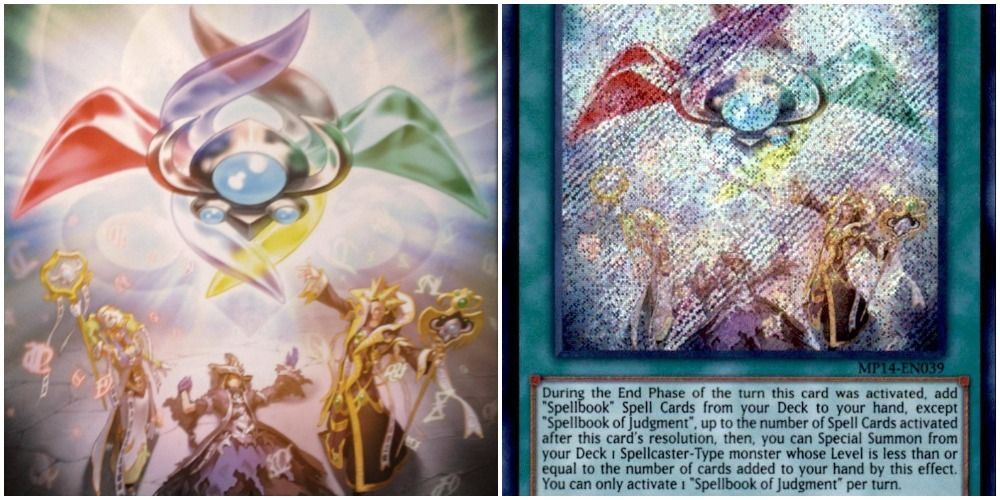
The Dragon Ruler format was about as objectionable as things could get, with them taking the unquestioned top spot in the game. The only deck that came close to comparing at the time were Spellbooks, and only then because of this single card. Spellbook of Judgment allowed players to add Spellbook cards to their hand based on how many they used, and Special Summon a Spellcaster Monster based on how many Spellbooks they'd used.
Like Super Rejuvenation, this encouraged players to overcommit to their boards, solely because they would be rewarded for it with free cards. Arguably, this card was even worse than Super Rejuvenation as well, because it allowed players to pick the specific cards they needed.
Source: https://www.thegamer.com/yu-gi-oh-strongest-most-powerful-best-spell-cards-ever-ranked/
0 Response to "Yu Gi Oh Ow to Know if Spell Card is Continuous"
Post a Comment